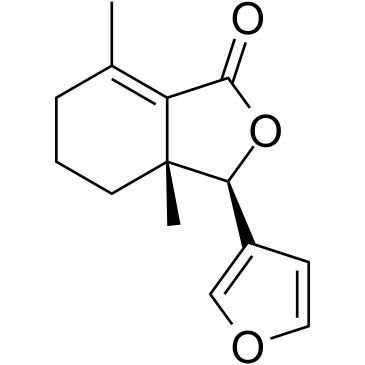Fraxinellone |
| Catalog No.GC38044 |
Products are for research use only. Not for human use. We do not sell to patients.

Cas No.: 28808-62-0
Sample solution is provided at 25 µL, 10mM.
Fraxinellone is isolated from the root bark of the Rutaceae plant, Dictamnus dasycarpus. Fraxinellone is a PD-L1 inhibitor and inhibits HIF-1α protein synthesis without affecting HIF-1α protein degradation. Fraxinellone has the potential to be a valuable candidate for cancer treatment by targeting PD-L1[1].
Fraxinellone (0-100 μM;12 hours) decreases the percent of PD-L1 positive cells from 20.4% to 11.4% in A549 cells[1]. Cell Viability Assay[1] Cell Line: A549 cells
Fraxinellone (oral gavage; 30 and 100 mg/kg; every three days; 30 days) significantly suppresses tumor growth, reduces HIF-1α, pTyr705 STAT3, PD-L1 and VEGF staining compared with the control group in female athymic BALB/c nude mice[1]. Animal Model: BALB/c nude mice[1]
[1]. Xing Y, et al. Fraxinellone has anticancer activity in vivo by inhibiting programmed cell death-ligand 1 expression by reducing hypoxia-inducible factor-1α and STAT3. Pharmacol Res. 2018 Sep;135:166-180.
Average Rating: 5 (Based on Reviews and 31 reference(s) in Google Scholar.)
GLPBIO products are for RESEARCH USE ONLY. Please make sure your review or question is research based.
Required fields are marked with *




















